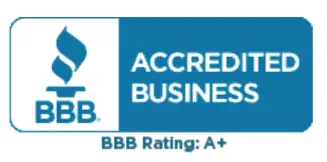-
ARGATROBAN (ar GA troh ban) is an anticoagulant. It is used in a hospital setting to help treat and prevent blood clots.
This medicine may be used for other purposes; ask your health care provider or pharmacist if you have questions.
-
This medicine is for infusion into a vein. It is given by a health-care professional in the hospital setting.
Talk to your pediatrician regarding the use of this medicine in children. Special care may be needed.
Overdosage: If you think you have taken too much of this medicine contact a poison control center or emergency room at once.
NOTE: This medicine is only for you. Do not share this medicine with others.
-
Do not take this medicine with any of the following medications:
•mifepristone
This medicine may also interact with the following medications:
•abciximab
•aspirin and aspirin-like medicines
•cilostazol
•clopidogrel
•dipyridamole
•heparin
•eptifibatide
•lamifiban
•NSAIDs, medicines for pain and inflammation, like ibuprofen or naproxen
•ticlopidine
•tirofiban
•warfarin
This list may not describe all possible interactions. Give your health care provider a list of all the medicines, herbs, non-prescription drugs, or dietary supplements you use. Also tell them if you smoke, drink alcohol, or use illegal drugs. Some items may interact with your medicine.
-
Visit your healthcare professional for regular checks on your progress. You may need blood work done while you are taking this medicine. Your condition will be monitored carefully while you are receiving this medicine. It is important not to miss any appointments.
Avoid sports and activities that might cause injury while you are using this medicine. Severe falls or injuries can cause unseen bleeding. Be careful when using sharp tools or knives. Consider using an electric razor. Take special care brushing or flossing your teeth. Report any injuries, bruising, or red spots on the skin to your healthcare professional.
If you are going to need surgery, tell your doctor or healthcare professional that you have received this medicine.
Wear a medical ID bracelet or chain. Carry a card that describes your disease and details of your medicine and dosage times.
-
This does not apply.
-
Side effects that you should report to your doctor or health care professional as soon as possible:
-allergic reactions like skin rash, itching or hives, swelling of the face, lips, or tongue
-signs and symptoms of bleeding such as bloody or black, tarry stools; red or dark-brown urine; spitting up blood or brown material that looks like coffee grounds; red spots on the skin; unusual bruising or bleeding from the eye, gums, or nose
-signs and symptoms of a blood clot such as chest pain; shortness of breath; pain, swelling, or warmth in the leg
-signs and symptoms of a stroke such as changes in vision; confusion; trouble speaking or understanding; severe headaches; sudden numbness or weakness of the face, arm or leg; trouble walking; dizziness; loss of coordination
Side effects that usually do not require medical attention (report to your doctor or health care professional if they continue or are bothersome):
-pain, redness or irritation at site where injected
This list may not describe all possible side effects. Call your doctor for medical advice about side effects. You may report side effects to FDA at 1-800-FDA-1088.
-
This drug is given in a hospital or clinic and will not be stored at home.
NOTE: This sheet is a summary. It may not cover all possible information. If you have questions about this medicine, talk to your doctor, pharmacist, or health care provider.
DISCLAIMER: This drug information content is provided for informational purposes only and is not intended to be a substitute for professional medical advice, diagnosis, or treatment. Patients should always consult their physician with any questions regarding a medical condition and to obtain medical advice and treatment. Drug information is sourced from GSDD (Gold Standard Drug Database ) provided by Elsevier.

